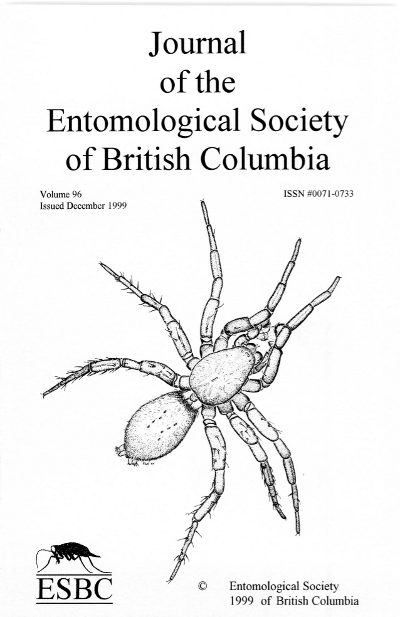Effect of mating disruption dispenser placement on trap performance for monitoring codling moth (Lepidoptera: Tortricidae)
Abstract
Capture of codling moth, Cydia pomonella L., in lure-baited, wing-style traps placcd at varying distances from polyethylene dispensers (Isomate-C+) in the canopy of an apple orchard was investigated during 1997. Replicated studies of trap - dispenser position were conducted with releases of sterile moths around each trap. In the first experiment, moth catch was unexpectcdly higher in traps placed 1 m below the 1997 dispenser's height (3.38 m) compared with traps at the dispenser's height. No differcnces were found in moth catch for traps placed adjacent to or 1 and 2 m distant from dispensers at the dispenser height. Subsequent analysis of the Isomate-C+ dispensers left in the field from 1996 found that they continued to emit low levels of sex pheromone through July. In the second experiment, the 1996 dispensers were removed from the trees around each trap and moth catch was significantly lower in traps placed 1 m below the 1997 dispenser height and in traps adjacent to the dispcnser comparcd with traps 1 and 2 m distant at the dispenser's height. In a third test, moth catches were significantly reduced when thc trap - dispenser distance was < 0.3 m for both 1996 and 1997 dispensers. Moth catch did not vary in traps placed 0.3 to 2.0 m from either dispenser type. A post-hoc evaluation or trap placements used in an areawide projcct situated near Oroville, Washington, in 1996 found that 9% of traps were placcd within 0.3 m of dispensers. This percentage of traps increased to 30% in 1997 following recommendations that traps should be placed higher in the canopy.
Key words : codling moth; sex pheromone; mating disruption; apple; lures; traps
Downloads
Issue
Section
License
Authors who publish with the Journal of the Entomological Society of British Columbia agree to the following terms:
-Authors retain copyright and grant the journal right of first publication with the work simultaneously licensed under a Creative Commons Attribution License that allows others to share the work with an acknowledgement of the work's authorship and initial publication in this journal.
-Authors are able to enter into separate, additional contractual arrangements for the non-exclusive distribution of the journal's published version of the work (e.g., post it to an institutional repository or publish it in a book), with an acknowledgement of its initial publication in this journal.
-Authors are permitted and encouraged to post their work online (e.g., in institutional repositories or on their website) prior to and during the submission process, as it can lead to productive exchanges, as well as earlier and greater citation of published work (See The Effect of Open Access).


